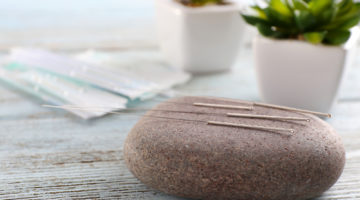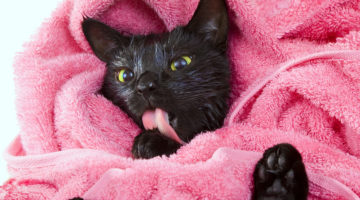If you have cats, you’ll be familiar with these unpleasant surprises. These five tips will help stop the hacking.
Five mornings in a row, Roger found himself stepping in what he calls “kitty landmines”. Susie’s loud hacking attempts to dislodge her hairballs were also disrupting his sleep. But it wasn’t his wakefulness or the slimy surprises on the floor that worried him as much as Susie’s health and discomfort.
Susie’s fur wasn’t terribly long, but it was thick with a lot of undercoat, similar to that of a British shorthair. Like most cats, she spent a good part of her day attending to hygiene, including grooming her luxurious coat and ingesting a lot of hair.
Why do cats get hairballs?
Hairballs should not be a problem for cats as a species, because in the wild they regularly consume the fur of prey animals. But selective breeding has resulted in cats with coats longer than natural for the type of small wild feline they evolved from.
While shorthaired cats can suffer from hairballs, those with longer, thicker coats are more prone to them because they’ll consume more hair while grooming. Some cats even become neurotic groomers.
Occasional hairballs are not a problem, but if you notice your cat hacking in what can sometimes be a difficult expulsion, or passing hairballs more than a few times a month, it’s time to address the situation. While hairballs are normally stuck in the stomach (which is why cats vomit them up), they can become impacted in the intestines, a potentially life-threatening situation.
Natural prevention and treatment
Instead of resorting to conventional cures, why not take the following five steps to help prevent hairballs in the first place?
1. Grooming
The more you brush your cat to remove loose hair, the less he will consume while grooming. It’s true that some cats refuse to let their caregivers groom them, but many enjoy the experience.
2. Diet
All my cats are fed a raw meat diet which includes muscle meat, organ meat and ground bone. They rarely, if ever, pass hairballs. If a raw diet isn’t possible, try a good quality canned food with a high meat content. The grains found in most low end commercial dry foods are not conducive to good digestive health in felines.
3. Natural fiber
Instead of feeding a high fiber dry food in an attempt to reduce hairballs, try adding a bit of canned pumpkin (without spices) to a quality canned food. Pumpkin can regulate digestive issues in cats. Adding water to the food is another option.
4. Exercise
The more your cat runs and plays, the better his digestive system will work and the healthier he’ll be all around.
5. Homeopathy
Excessive grooming or difficulty passing hairballs signal an overall lack of health. A well-indicated homeopathic remedy or, if necessary, a treatment plan involving several remedies over time, will result in a healthier cat less prone to hairballs. Be sure to work with a qualified homeopath.
Once Roger began implementing some of the above suggestions into Susie’s lifestyle, he soon saw improvement. “She seems happier and has more energy. Best of all, I haven’t stepped in a hairball for weeks!”
Do “specially formulated” diets & medications help?
Many commercial pet food companies offer dry diets formulated to alleviate hairballs. These foods contain more fiber, such as powdered cellulose or beet pulp, to make hairballs pass more easily through the cat’s digestive system. The problem with this type of food is that the extra fiber is added in place of other important ingredients including meat.
There is virtually no fiber in a cat’s natural diet, so adding extra fiber may actually be detrimental. Too much fiber can irritate a cat’s digestive tract, and cause cramping or bloating. In addition, it can bind with the water normally passing through the digestive tract, causing constipation or concentrating the urine and leading to urinary tract disease. Many cats find high fiber food unpalatable, and extra fiber can cause bulkier stools.
Other conventional treatments for hairballs include Vaseline, mineral oil, or products like Laxatone or Petramault, both of which are flavored petroleum jelly. Personally, I cringe at the idea of feeding a cat petroleum jelly or mineral oil.







No Comment